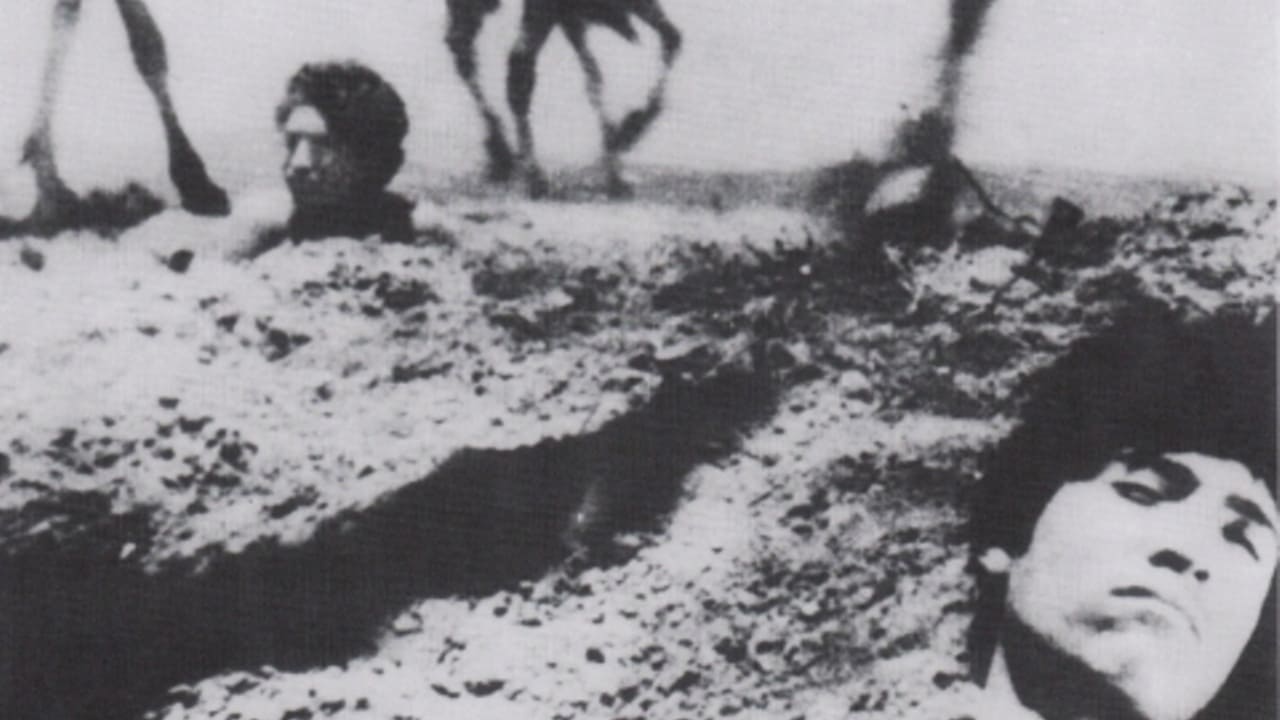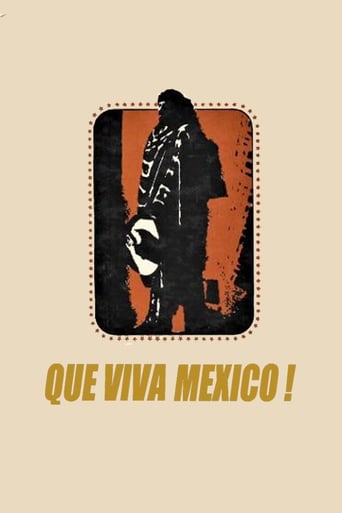



Masterful Movie
Far from Perfect, Far from Terrible
Although it has its amusing moments, in eneral the plot does not convince.
View MoreThe thing I enjoyed most about the film is the fact that it doesn't shy away from being a super-sized-cliche;
View MoreThe general plan of this film is strongly reminiscent of two films that Walt Disney made at the request of the State Department during World War II, namely SALUDOS AMIGOS and THE THREE CABALLEROS. The content here is serious and dramatic, the Disney approach is funny entertainment in cartoon form, but similarities are unmistakable.It is also my understanding that the U.S. State Department sent Orson Welles to Brazil to make a film. Reels and Reels of film were shot, the funding fathers were not given progress reports that convinced them that anything like they wanted would ever result, and the funding was cut off. The fate of the reels and reels of Welles shot film seems quite similar to what happened to Que Viva Mexico.As a personal evaluation and comment, I would like to add to what others have written, that I saw nothing in this film that could possibly be construed as blatant propaganda. Great films like CASABLANCA and GONE WITH THE WIND have a strong propaganda element to them, the first one, wartime "Us are Good Guys, Nazis are Bad" and the second one "Slavery and the Ku Klux Klan were the good guys, Dixie and the Old South were just wonderful". QUE VIVA Mexico has less propaganda.
View MoreIt's unbelievable how everything can be art when you look through the eyes of a genius. Sergei Eisenstein: the master of editing, the great father of Russian cinema, a role model for other famous directors like Charlie Chaplin or Andrei Tarkovski; author of cinematic masterpieces like Battleship Potemkin, Ivan the Terrible and Alexander Nevsky. Now we have his version of his Mexican adventure: "Que Viva Mexico!" an epic semi-documentary lost in time. Why was it lost in time for decades? Because no one in Russia or in the USA trusted this film enough to show it. Eisenstein was a nobody when he arrived in the USA to plan another project, the soviet authorities didn't want him in the USSR due to his polemic point of views of the October Revolution and the czarism. Sergei adored Mexico because of its beauty and its hospitality. Famous Mexican painters like Diego Rivera, Frida Kahlo and David Alfaro Siqueiros, along with his Russian partner Trotsky, helped him to inspire. Eisenstein filmed his version of the Mexican traditions and he was very close. As a Mexican, I didn't realized how magical these traditions were until I watched this film. A really good film maker knows how to show the real life in a fantastic way. Now, do I have to say the name of this really good film maker? I don't think so, I think you already know. "Que Viva Mexico!" highly recommendable, Mexican fellows: watch it, this is your real country.
View MoreFilm buffs know the history of this lost all too well- Eisenstein came to Hollywood to work for Paramount, Paramount and Sergei never really saw eye to eye. Before giving up on making an American Production, Upton Sinclair invited Eisenstein to make a feature film about Mexico. Eisenstein shot miles of footage, and the money and interest from backers ran out. Eisenstein was forced to return to his native Russia without his Mexican footage. The footage was cut together by others at about this time to make THUNDER OVER MEXICO, and they did not follow Eisenstein's editing notes (They simply made an edit every four seconds. Watch the film and count, you'll see what I mean...) This version, completed by his associates 30 years after his 1948 death comes close to Eisenstein's intent, but without Eisensetin at the editing board, something is missing. This resulting video is entralling. His incredible shot compositions (which influence me to no end as a film-maker) are all there. There's one scene, which involves a shoot-out reminds us what a John Wayne western directed by Eisenstein would of lookied like.
View MoreAlthough its coscenarist and director, Sergei M. Eisenstein did not live to complete "Que Viva Mexico?," the Russian who reconstructed this 1979 version for Mosfilm, Grigori Alexandrov, co-authored the film and worked closely with Eisenstein in 1931 and 1932 in the filming of the footage ultimately fashioned into several pictures, including butchered versions released by Sol Lesser and even some Bell and Howell documentaries! At some point, the man who initially commissioned the movie, Upton Sinclair, donated all or almost all of Eisenstein's footage to the Museum of Modern Art, which made it available as it was shot (take by take by take) in a "study" film. This is the first time, to my knowledge, that an edited version has appeared in video, and for that, Eisenstein fans and lovers of cinema should be jubilant! Even if Alexandrov had cut the footage completely out of order and in a form that would make Sergei Mikhailovich roll over in his grave, we can appreciate the dynamic power of the images, so ingeniously composed and photographed by Eisenstein with his longtime cameraman, Eduard Tisse. Of course, Eisenstein's remarkable scenario could never be realized EXACTLY as he wrote it, but Alexandrov did an admirable job all the same. In whatever form we see it, Eisenstein's footage reminds us that this aborted masterpiece, had he been able to complete the movie, would have been just that -- one of the greatest motion pictures of all time. It is a tragedy for film lovers that Eisenstein could not obtain the negative from the Sinclair cabal (which included the American author's Pasadena, California Standard Oil cronies!) at the time. But this 1979 version is better than nothing, and a lot better than many so-called movies churned out by Hollywood today. The film should be studied by every student of cinema, and especially photographers and editors. In truth, Eisenstein probably was planning as many as six different films, but Sinclair sent his alcoholic brother-in-law to ride herd on the Russians, to the result that the "plug was pulled" on the production short of its completion by Eisenstein. Frankly, had the latter managed to complete the movie and edit it himself, I am convinced film buffs would put it right up there with "Citizen Kane" and "Casablanca" (i.e. among the greatest masterpieces of cinema). I recommend the film highly, if only as a reminder of what might have been!
View More